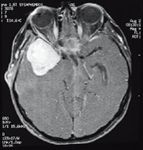Article
Untangling neuroimaging modalities key for surgeons
Computed tomography and magnetic resonance imaging are extremely important imaging modalities with different capabilities that the ophthalmic surgeon should understand to use to the best advantage, according to Neil R. Miller, MD.

Key Points

The main radiologic neuroimaging studies currently used are computed tomography (CT) and CT angiography (CTA). The nonradiologic imaging studies are magnetic resonance imaging (MRI), MR angiography (MRA), ultrasonography, and optical coherence tomography, according to Dr. Miller, who emphasized that every imaging modality has strengths and weaknesses; no one method is perfect.
"The test a clinician should request is the test that will answer the question he or she [faces]," said Dr. Miller, professor of ophthalmology, neurology, neurosurgery, and neuro-ophthalmology, Johns Hopkins Medical Institutions, Baltimore. "The clinician cannot just order, for example, a CT scan or MRI. The radiologist or neuroradiologist must be told what the clinician is looking for.

CT is best for imaging of the orbit because it shows not only soft-tissue lesions but also the bony anatomy. It is also excellent for imaging of the paranasal sinuses, large intracranial lesions both above and below the tentorium, and subarachnoid and intracranial hemorrhage.
CT is less useful for imaging of optic chiasmal lesions, brainstem lesions, and small lesions in the cerebral hemispheres or posterior fossa, however. If using enhancement with iodinated contrast material, there is the potential for severe reactions to the contrast agent, Dr. Miller said.
"[CT] is the best imaging test for presumed orbital lesions, bony anatomy, and the paranasal sinuses, but the correct images must be obtained, which means thin sections on occasion and direct or re-formatted coronal views. Contrast material is rarely needed in the orbit," he said.
In the examples he provided, Dr. Miller noted that relationships to bone are extremely important. In one image, the lesion was immediately adjacent to bone with remodeling of the bone, indicating that the lesion was extraperiosteal, which pinpoints the location for the physician.
Newsletter
Don’t miss out—get Ophthalmology Times updates on the latest clinical advancements and expert interviews, straight to your inbox.




